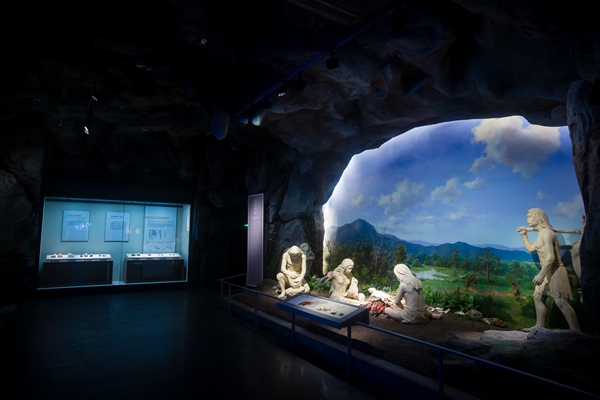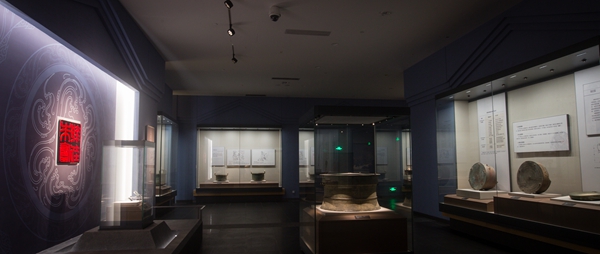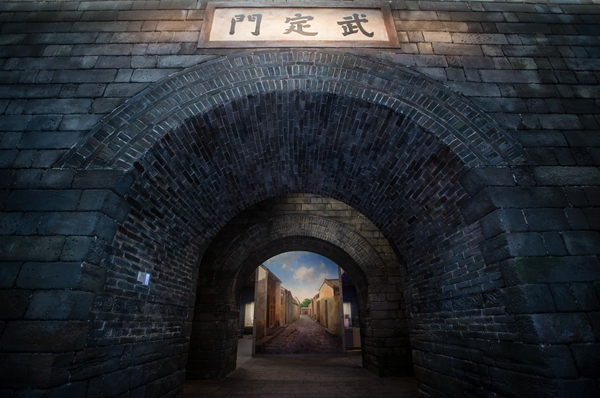方外封疆——海南历史陈列 A Remote Border Region – Exhibition of History
字号:T|T
2020-11-10 08:52 来源:海南省博物馆
海南省位于我国最南端,包括海南岛和南海诸岛及其广阔海域。琼州海峡作为天然屏障,使海南岛孤悬海外。
战国之前,地在荒服之外,为百越的骆越之地;秦时,海南岛为象郡之外徼;及至两汉,朝廷二度遣伏波将军南定,置珠崖、儋耳两郡,海南岛正式归入汉朝版图;三国,吴主复征朱崖,属吴之交州;隋灭南朝,冼夫人率部归附,请置崖州,复为一统;入唐,建置益备,以崖州都督府辖诸州县,海南岛自此称“琼”,其中南部的振州(在今三亚)管辖西南至大海千里;宋代,中土人士往来络绎不绝,舟船远航千里长沙、万里石塘;入元,设海南道,更行南海天文测验,厘定海疆;明清,置琼州府,人文蔚起,奇甸日新,已然琼台福地。
Located at the southernmost tip of China, Hainan Province consists of the main island of Hainan, South China Sea islands, and its vast sea area. Qiongzhou Strait, a natural barrier, separates Hainan Island from the Chinese mainland.
Isolated from the Main Continent
Isolated from the Main Continent

曾几何时,随着能量巨大的地壳运动,海南岛与华南大陆时而相连,时而分离,造就了海南岛独特的地理生态环境。终有一天,地质运动趋于平缓,大海之南,终成大洲。
A Remote Border Region

公元前221年,秦始皇统一中国,在岭南地区开置桂林、南海、象三郡,海南岛为象郡之外徼。秦末汉初,海南岛属南越国。汉武帝元鼎六年(前111年),伏波将军路博德率汉军平定南越;翌年,在海南岛设珠崖、儋耳二郡,自此海南岛正式列入汉朝版图。
Reclamation of Islands and the Sea

唐朝在海南岛进行统治管辖,随着大量移民逐渐登岛,促进了土地开发,在岛内初步形成了通往各州县的道路,加速了土著黎族的封建化,促进了沿海一带以及黎汉杂居地区的社会经济发展。与此同时,中国人民在南海航线上的对外贸易活动日趋频繁,中央政府对南海诸岛的经营管辖不断增强。海上交通贸易的繁荣促进了文化交流,各种宗教信仰交汇,呈现出海纳百川的文化盛景。
d areas inhabited both by ethnic Li and Han peoples. Meanwhile, foreign trade condThe Continuous Development of Hainan

明洪武二年(1369年)设琼州府,是海南岛社会经济发展的转折点,促进了中央政权对海南岛的大规模开发和建设,大量移民迁琼,带来了先进文化和技术,促进了当地农业、手工业以及商业贸易的发展,文化教育事业也随之勃兴。清政权加强了对海南岛的管辖,建设海防设施,使得社会经济文化得以长足进步。清末琼人下南洋,在异地艰苦创业,奋发进取,融合中西,返岛发展,见证了奇甸的瑰丽文化景象。
In the second year of the Hongwu period of the Ming Dynasty (1369), Qiongzhou Fu was established, marking a turning point in the history of social and economic development in Hainan, and fueling massive central government developments and construction on the Island. Meanwhile, a large number of immigrants to Hainan brought with them advanced cultural and scientific expertise, and accelerated the development of local agriculture, handicrafts, commerce, and trade, helping local culture and education to prosper. In the Qing Dynasty (1644-1912), the central government strengthened its reign over Hainan and constructed coastal defense facilities, thus fostering substantial political, economic, and cultural progress. Toward the end of the Qing Dynasty, people from Hainan began to venture southward to Southeast Asian countries. Driven by an enterprising and hardworking spirit, they started new businesses and achieved success. With the wealth they made, some of them returned to Hainan to contribute to local development, launching a period which witnessed the rise of a vibrant culture.
